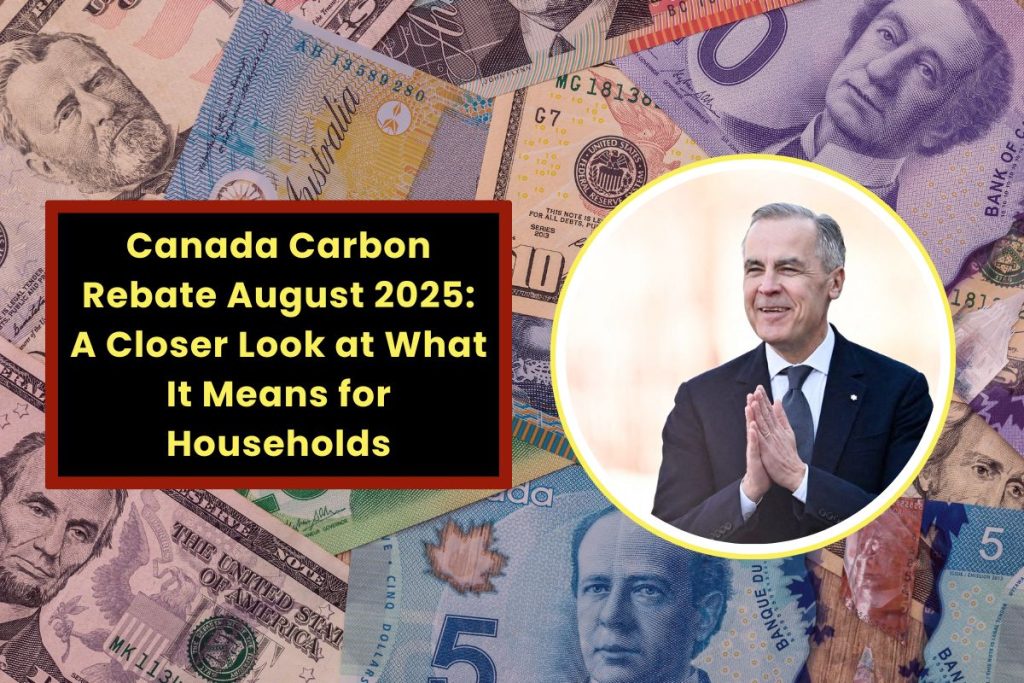With the initiation of August, Canadians are preparing for the payout from CRA regarding the carbon rebate initiative. Aligning with the SDGs by the UN, the Canadian government is gearing up for the reduction in emissions and pushing the populace towards sustainable alternatives. The CCR, which used to go by the name Climate Action Incentive Payment, is more than just a cheque from the government; it’s a key part of Canada’s plan to reduce carbon emissions without overburdening everyday citizens.
Benefits provided are looked after by the CRA (Canadian Revenue Agency), and if you’re signed up for direct deposit, expect the money in your bank account within five business days. If you live in one of these eight provinces, you’re likely included in the program: Alberta, Saskatchewan, Manitoba, Ontario, New Brunswick, Nova Scotia, Prince Edward Island, and Newfoundland and Labrador. Provinces like Quebec and British Columbia run their own carbon pricing systems, so residents there don’t get CCR payments. What’s interesting is that 90% of the money collected goes back to individuals and families.
The other 10%? It’s used for local projects that help cut emissions—like upgrading school heating systems, funding small businesses going green, or supporting Indigenous-led environmental efforts. This article breaks down the basics of the rebate, how much you could receive this August, who’s eligible, and what might change next year.
Canada Carbon Rebate August 2025
The CCR, which used to go by the name Climate Action Incentive Payment, is more than just a cheque from the government; it’s a key part of Canada’s plan to reduce carbon emissions without overburdening everyday citizens. It is to root out the fossil fuel-based carbon emissions and switch towards the eco-friendly options.
If you live in one of these eight provinces, you’re likely included in the program: Alberta, Saskatchewan, Manitoba, Ontario, New Brunswick, Nova Scotia, Prince Edward Island, Newfoundland, and Labrador. Provinces like Quebec and British Columbia run their own carbon pricing systems, so residents there don’t get CCR payments.
What’s interesting is that 90% of the money collected goes back to individuals and families. The other 10%? It’s used for local projects that help cut emissions—like upgrading school heating systems, funding small businesses going green, or supporting Indigenous-led environmental efforts.
A prominent fact is that the rebates were supported by most of the families because their expenditure got hiked due to the surcharge on the conventional fuel. Nearly 80% of the households came in support of the initiative, and it sounded good for the government as well as for their popularity among the masses.

Canada Carbon Rebate August 2025 Payment Eligibility
The next quarterly payment is scheduled to go out around August 15 or 16, 2025. You don’t need to apply if you have filed your 2024 taxes. To attain the eligibility for the August rebate, one must be:
- A resident of one of the eight participating provinces as of July 15, 2025
- At least 19 years old, or living with a spouse, common-law partner, or child
- A Canadian national or PR holder with a minimum stay of 18 months in the country
- Cleared of taxation dues for the financial year 2024
Benefits provided are looked after by CRA (Canadian Revenue Agency), and if you’re signed up for direct deposit, expect the money in your bank account within five business days. If you’re still getting cheques, it might take up to 10 days.
Living in a rural area? You’ll get a 20% top-up automatically added to your rebate. No paperwork needed—your postal code determines if you qualify.
Estimated Amounts by Province
Canada being a federal country has provided flexibility to the provinces as the revenue is also different and thus the payments would be depending on the residence of the individual. Below listed is the data for benefits according to the provinces:
| Province | Base Rebate Amount | Rural Supplement | Total |
| Alberta | $450 | $90 | $540 |
| Manitoba | $300 | $60 | $360 |
| Ontario | $280 | $56 | $336 |
| Saskatchewan | $376 | $75.20 | $451.20 |
| New Brunswick | $190 | $38 | $228 |
| Nova Scotia | $206 | $41.20 | $247.20 |
| Prince Edward Island | $220 | Included | $220 |
| Newfoundland and Labrador | $298 | $59.60 | $357.60 |
Payments differ for individuals and families due to the number of consumers and tax payments. For instance, Alberta can be taken into consideration, where singles receive $225, but with a family, the amount can be over $335. Over a year, a family of four in some provinces could see up to $1,800 in tax-free support.
How to Make Sure You Don’t Miss Your Payment
Payout may not be coming immediately, but one has to be prepared for the process in advance, which includes:
- Filing of taxes for the fiscal year 2024 is pending.
- Keep the information updated with the CRA regarding your bank account and communication addresses.
- Keep an eye on your account if you don’t receive anything by August 20; call CRA.
- Keep these things in mind while opting to avail the benefit, and it is advised to beware of scammers phishing in the guise of a government agency contacting you for the payments.
Canada Carbon Rebate Changes 2025
The government is going full swing to implement the carbon-cutting policy. The federal government has said it plans to phase out the consumer carbon tax and the CCR program by April 1, 2026, which indicates the final payment would be released in April 2026.
In the gradual phase, it would impact the industries more, which are a major source of emissions, and would reduce the burden on consumers. What this means for future household supports remains to be seen.
Final Thoughts
The August 2025 Canada Carbon Rebate is more than just a financial boost; it’s a way for the government to make environmental policy a bit more manageable for ordinary Canadians. It will assist laymen with the inflationary fuel prices, which are highly volatile in the present geopolitical situation.
The only mandatory task expected from the beneficiary is the taxes paid for the last financial year, and having the information updated with the CRA, which is the nodal agency to look after the delivery of payments.
Frequently Asked Questions
What is the CCR?
It is a carbon pricing system initiative’s method that is useful to provide insight into the amount payable. The Canadian government is raising the issue of carbon reduction, and thus, some amount is provided to the people for a greener approach.
What is the amount that can be expected?
It is different for every state, as we know that Canada is a federal parliamentary system, which has many states, and they have their own budgets.
What is the eligibility to receive the benefits?
One must be a citizen of Canada or a PR for at least 18 months, have paid taxes for the 2024, etc.
| NLR News | Click Here |

Hello! I’m Kaylani , a professional content writer with a knack for breathing life into words. I have been providing high-quality, research-driven content in Sectors like Technology & Personal Finance . With a background in Finance Tech Management , I specialize in turning complex information into engaging content that resonates with a wide.
